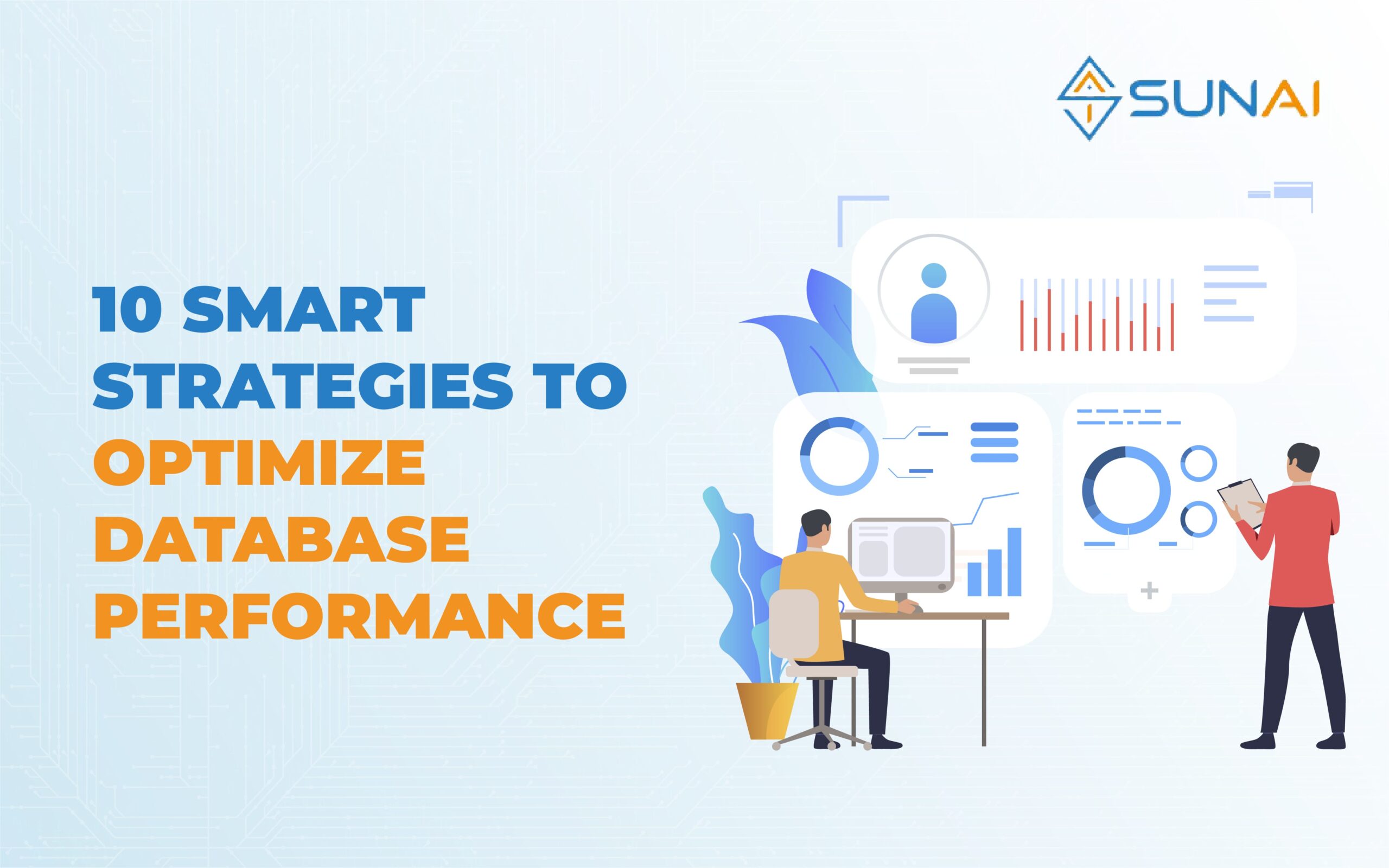In today’s fast-paced digital world, where data is the backbone of every organization, ensuring the optimal performance of databases is crucial. Database performance optimization refers to the process of enhancing the efficiency and speed of database operations. When databases are optimized, they can handle increasing workloads, deliver faster query responses, and provide a seamless user experience. In this article, we will explore ten smart strategies to optimize database performance and unlock its full potential.
Table of Contents
Importance of Database Performance Optimization
Database performance optimization plays a pivotal role in the success of any application or system that relies on a database. Improved performance leads to enhanced productivity, reduced downtime, and better overall user experience. When databases are operating at their peak efficiency, organizations can process and analyze data faster, make informed decisions, and gain a competitive edge in the market. Additionally, optimized databases require fewer hardware resources, resulting in cost savings for businesses.
Common Challenges in Database Performance
Before diving into the strategies for optimizing database performance, it’s essential to understand the common challenges that organizations face in this area. One of the primary challenges is slow query execution. When queries take a long time to process, it can lead to frustration for users and hamper productivity. Another challenge is inadequate indexing. Without proper indexing, databases struggle to locate and retrieve data efficiently, leading to slower performance. Additionally, poor database design, lack of regular maintenance, and suboptimal hardware configurations can all contribute to reduced database performance.
Database Performance Monitoring Tools
To optimize database performance effectively, it is crucial to have visibility into the current state of the database and identify areas for improvement. Database performance monitoring tools provide real-time insights into the performance metrics, such as CPU usage, memory utilization, and query response times. These tools enable database administrators to proactively identify bottlenecks, analyze trends, and make informed decisions to optimize performance. Some popular database performance monitoring tools include Oracle Enterprise Manager, SolarWinds Database Performance Analyzer, and MongoDB Cloud Manager.
Ten Smart Strategies to Optimize Database Performance
1. Indexing
Indexing is a fundamental strategy for optimizing database performance. By creating appropriate indexes on frequently queried columns, databases can quickly locate and retrieve data, significantly reducing query response times. Maintaining a balance between the quantity of indexes and their influence on database write operations is crucial. Over-indexing can slow down write operations, so it’s essential to carefully analyze query patterns and select the most beneficial indexes.
2. Query Optimization
Optimizing database queries is another effective strategy for improving performance. By reviewing and optimizing queries, organizations can eliminate unnecessary joins, reduce data retrieval times, and minimize resource consumption. Techniques such as rewriting queries, eliminating subqueries, and using appropriate join types can significantly enhance query performance. It’s also important to ensure that queries are leveraging the available indexes and utilizing query hints whenever necessary.
3. Database Design
A well-designed database is critical for optimal performance. Properly organizing tables, defining relationships, and selecting appropriate data types can have a profound impact on database performance. Normalization, denormalization, and partitioning techniques can all be employed to optimize database design. By considering the specific requirements of the application and workload patterns, organizations can create a database schema that maximizes performance and scalability.
4. Regular Database Maintenance and Optimization Tasks
Regular maintenance and optimization tasks are essential to keep databases running smoothly. This includes tasks such as updating statistics, rebuilding indexes, and removing unnecessary data. By regularly performing these tasks, organizations can eliminate fragmentation, improve query plans, and maintain optimal performance. Automation tools and scheduled maintenance plans can streamline these tasks and ensure they are performed consistently.
Also Read
5. Hardware Optimization
The hardware on which the database runs plays a crucial role in its performance. Organizations should invest in high-quality hardware components such as fast processors, solid-state drives (SSDs), and ample memory to optimize database performance. Additionally, configuring the hardware for optimal settings, such as adjusting the disk I/O settings and optimizing network configurations, can further enhance performance. Regular monitoring of hardware metrics and benchmarking can help identify any areas for improvement.
6. Connection Pooling
Connection pooling is a technique that allows multiple clients to share a pool of established database connections. By reusing connections, organizations can reduce the overhead of establishing a new connection for each client request, thereby improving performance. Connection pooling also helps manage the number of concurrent connections, preventing the database from becoming overwhelmed during peak usage. Database connection pooling libraries, such as Apache DBCP and HikariCP, can be integrated into applications to implement this strategy.
Also Read
7. Load Balancing for Database Performance
Distributing database workload across multiple servers can significantly improve performance and scalability. Load balancing involves evenly distributing incoming requests among multiple database servers, ensuring that no single server is overwhelmed. This strategy not only improves performance but also enhances fault tolerance by providing redundancy. Load balancing can be achieved through hardware load balancers or software-based load balancers such as HAProxy or Nginx.
8. Caching Strategies for Improved Performance
Caching frequently accessed data can greatly enhance database performance. By storing frequently accessed data in a cache, organizations can reduce the number of database queries and improve response times. Caching can be implemented at various levels, including application-level caching, database query caching, and in-memory caches such as Redis or Memcached. It’s important to carefully select the data to be cached and define appropriate caching policies to ensure data consistency and accuracy.
9. Monitoring and Tuning
Continuous monitoring of database performance is essential to identify performance bottlenecks and make necessary adjustments. By analyzing performance metrics such as CPU usage, memory utilization, and query response times, organizations can proactively detect issues and fine-tune the database configuration. Monitoring tools, such as New Relic and Datadog, provide real-time insights and alerts, enabling organizations to optimize performance and prevent potential problems.
10. Scalability Planning
As organizations grow and databases face increasing workloads, scalability becomes crucial. Incorporating scalability planning from the beginning ensures that databases can handle future growth without sacrificing performance. Techniques such as horizontal scaling, vertical scaling, and sharding can be employed to distribute the workload across multiple servers and maintain optimal performance. Regular performance testing and capacity planning help organizations anticipate future needs and make the necessary adjustments in advance.
Conclusion
Optimizing database performance is essential for organizations aiming to maximize efficiency, reduce downtime, and provide an exceptional user experience. At SUNAI, our team comprises experienced backend developers who understand the critical importance of optimizing database performance. Drawing from our expertise and real-world experience, we’ve outlined ten smart strategies in this blog to help organizations maximize efficiency, minimize downtime, and deliver exceptional user experiences through optimized databases. By implementing the ten smart strategies discussed in this article, organizations can unlock the full potential of their databases and gain a competitive advantage in the digital landscape. From indexing and query optimization to hardware optimization and scalability planning, each strategy plays a crucial role in enhancing performance. By continuously monitoring performance metrics, fine-tuning configurations, and adapting to changing workloads, organizations can ensure that their databases deliver optimal performance now and in the future.







0 Comments